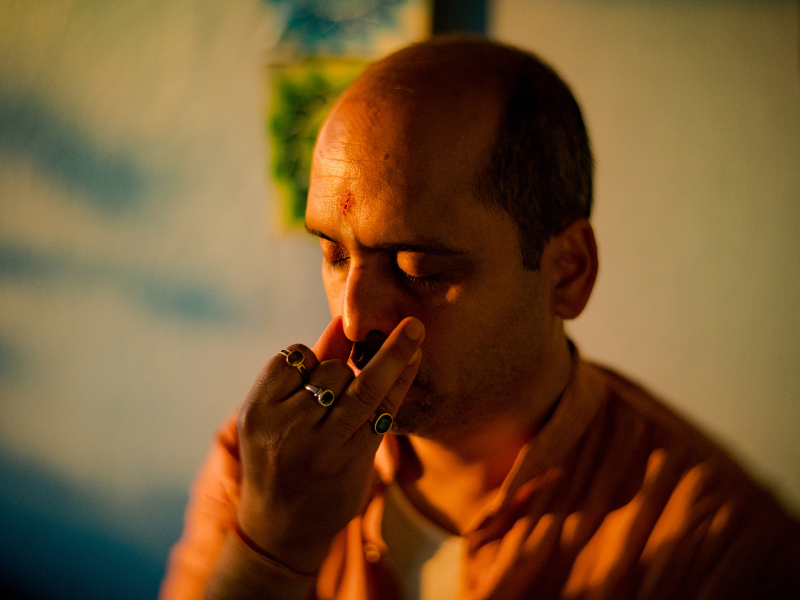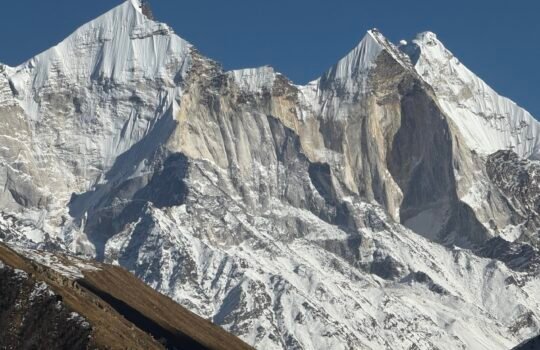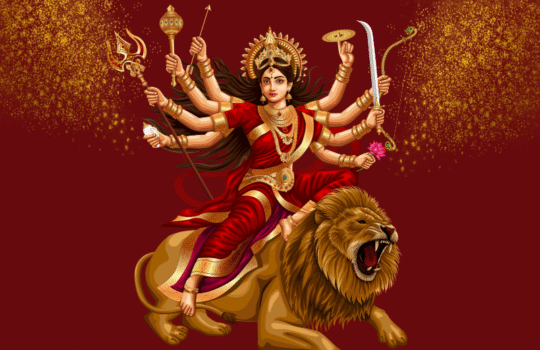Pranayama – the science of the breath
The extensive benefits of pranayama have always made it an integral part of traditional yoga.
From the first breath at birth to the last at death, we are constantly breathing. But what sets pranayama apart from our everyday breathing? Specifically, it is conscious, or regulated breathing.
Pranayama is a Sanskrit term composed of two words: prana, which means one’s life force, and ayama, which translates to expansion or control. It refers to a series of breathing techniques designed to regulate and expand the vital energy within the body and mind.
However, pranayama is more than just “breathing exercises – it is a direct tool for balancing the nervous system, calming the mind, and creating a deeper connection between your physical and spiritual self. It is one of the eight limbs of yoga as described in the Yoga Sutras of Patanjali, placing it on equal footing with asana, meditation, and ethical living.
The ancient Himalayan sages taught pranayama as a fundamental practice for spiritual development. At the Vedic Yoga & Ayurveda Retreat Centre, we teach pranayama in the Himalayan tradition—founded on authenticity and daily spiritual discipline. So, whether you are a beginner seeking inner calm or a practitioner deepening your sadhana, understanding pranayama can transform your entire approach to yoga, not just on the mat, but in your life.
Why Pranayama Matters in Modern Yoga
Modern yoga often focuses on physical postures; and while asana supports physical strength and flexibility, it is pranayama that works directly with the subtle body—the astral body, refining the flow of prana through the nadis (energy channels).
Here’s why integrating pranayama into daily practice is vital:
- It prepares the mind for meditation: a restless mind struggles with stillness. Pranayama helps you move from the “monkey mind” to inner clarity.
- It regulates energy: balancing the solar and lunar energies through pranayama harmonises the nervous system.
- It purifies internal systems: thebreath carries not only oxygen but also subtle energy. Proper breathing supports the body’s detoxification and energetic alignment.
- It supports emotional balance: the breath and emotions are deeply linked. Altering your breathing patterns can shift your emotional state.
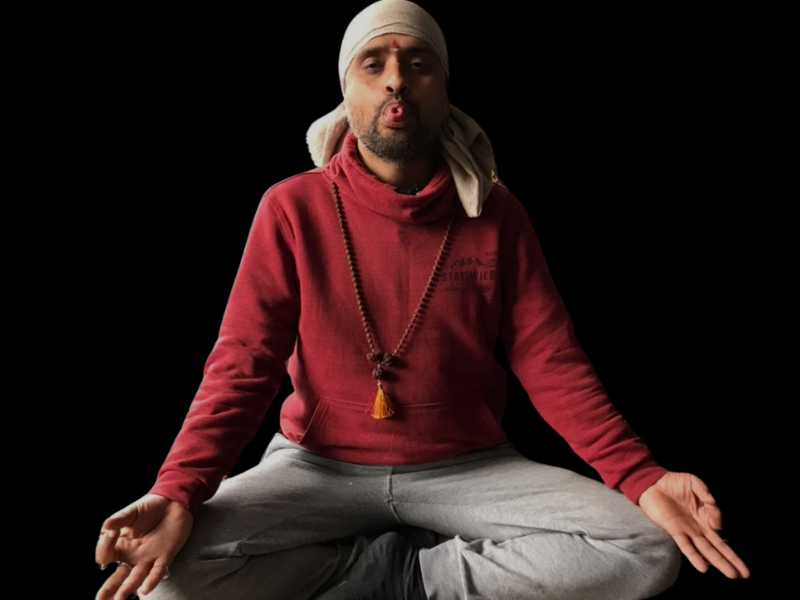
At the Vedic Yoga Centre, we see pranayama not as an optional technique but as a daily discipline that transforms how you experience yourself and the world around you.
Key Benefits of Pranayama in Your Yoga Practice
The key benefits of pranayama are listed below.
1. Calming the Nervous System
Your breathing patterns mirror your state of mind: when you are anxious, your breath becomes short and shallow. But through regular pranayama practices, such as nadi shodhana (alternate nostril breathing) or ujjayi (victorious breath), you slow down the breath and directly engage the parasympathetic nervous system, promoting:
- Reduced anxiety
- Lowered heart rate and blood pressure
- Improved sleep
- Increased ability to stay calm under stress
2. Balancing Ida and Pingala Nadis
In yogic physiology, the two main nadis—ida (lunar, cooling) and pingala (solar, heating)—govern our mental and physical balance. For most of us, one of these energy channels is dominant, which leaves us out of balance. Practices like nadi shodhana help align these primary energy channels.
At our Centre in Rishikesh, this practice is integrated into both group classes and individual sadhana programs to support balance and clarity.
3. Enhancing Focus and Clarity
Practices such as bhramari (humming bee breath) and kumbhaka (breath retention) build mental concentration. The regulation of your breath automatically begins to regulate your thinking.
Students often say that shortly after starting pranayama practice, they are better able to focus during meditation. Their mind slows down, leading to a greater sense of inner stability.
4. Supporting Physical Health
Pranayama influences multiple physiological systems:
- Respiratory system: it increases lung capacity and efficiency.
- Digestive system: it stimulates internal organ functions of the digestive process and improves the absorption of nutrients in the intestines.
- Cardiovascular system: makes the heart stronger and improves circulation.
- Immune system: it reduces systemic inflammation and supports vitality.
Practised daily, pranayama enhances overall well-being, especially when performed in conjunction with an Ayurvedic lifestyle. You can read more about Ayurveda, its therapies and treatments on our website.
5. Cultivating Inner Awareness
When you watch the breath with awareness, you begin to watch the mind. Over time, this quiet observation becomes a pathway to your inner self. It is a journey from reaction to self-awareness. This shift can be seen as the essence of yogic transformation.
The Core Pranayama Techniques Taught at Vedic Yoga Centre
Our teachers follow a systematic approach that respects both the traditional texts and the practitioner’s readiness. The key techniques include the following.
1. Nadi Shodhana (Alternate Nostril Breathing)

- Balances ida and pingala
- Calms the mind
- Prepares for meditation
2. Kapalabhati (Frontal brain cleansing)
- Stimulates digestion
- Clears mental dullness
- Energises the body
3. Bhastrika (Bellows Breath)
- Builds internal heat
- Strengthens lungs
- Clears emotional stagnation
4. Bhramari (Humming Bee Breath)
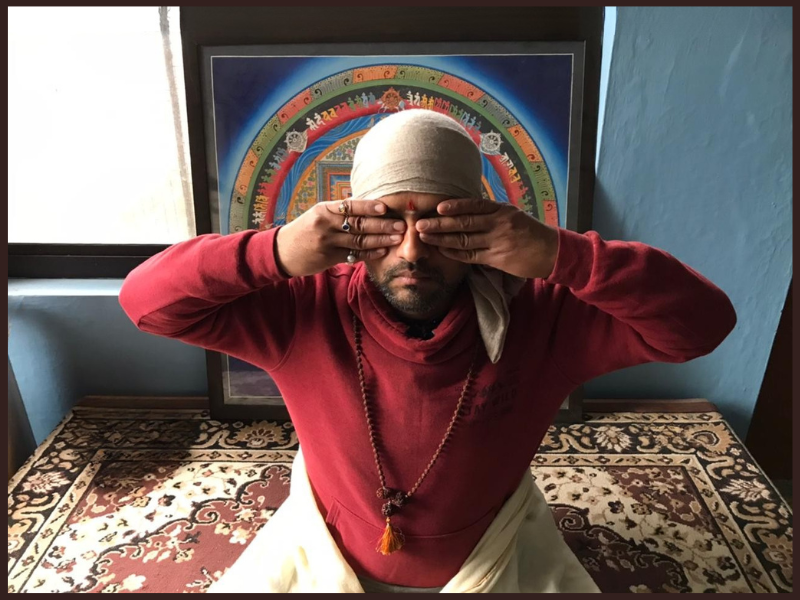
- Relieves tension
- Soothes the nervous system
- Helps overcome insomnia
- Aids emotional regulation
We introduce each technique progressively, ensuring safety and depth of experience.
Integrating Pranayama into Daily Sadhana
Sadhana is your daily spiritual practice. At the Vedic Yoga Centre, we encourage you to:
- Begin with 5–10 minutes of seated silence
- Practice 7–11 rounds of nadi shodhana
- Add one energising and one calming technique
- Observe the effects before transitioning into meditation or asana
Over time, pranayama becomes second nature, much like tuning your instrument before playing it.
Testimonials
At the Vedic Yoga Centre, pranayama is not a standalone practice, but an integral part of our training programs and daily classes. We believe in a holistic approach, integrating breath awareness and energy management into every aspect of your yogic journey. Our students consistently appreciate this comprehensive approach, often reflecting on the deep impact of breathwork in their reviews. You can connect with these reviews through our dedicated YouTube Testimonials playlist.
Pranayama and the Inner Journey
The Himalayan sages understood that the breath is the bridge between your body and your soul. As your practice deepens, so does your perception of prana—not just as air but as intelligence, awareness, and vitality. This inner connection is what makes pranayama a powerful tool on the path of self-realisation. It’s not about control, but awareness; not about the quantity of time you practice, but about your presence during the practice.
Practical Guidelines for Starting Pranayama Practice
If you’re just beginning:
- Choose a quiet space andsit comfortably, maintaining a straight spine.
- Begin with observation: just watch your natural breath for a few minutes.
- Learn with guidance: start with nadi shodhanaand initially work with your natural breath, but find an appropriately qualified teacher to further develop your practice.
- Be consistent: practice daily, even for 10 minutes.
At the Vedic Yoga Centre, pranayama is a key component of each course and retreat. So, whether you’re staying for a week or a month, you’ll receive appropriate support in developing your breath awareness.
Common Misconceptions About Pranayama
Let’s clarify a few points:
- Myth: Pranayama is advanced and risky.
Truth: When taught step-by-step with awareness, pranayama is safe and highly effective—even for beginners. - Myth: It’s just about breathing deeply.
Truth: It’s about how you breathe—timing, awareness, and subtle control. - Myth: You need perfect posture.
Truth: Comfort is more important than perfection. A straight spine and still body are enough, and If you can’t sit on the ground in a cross-legged position, sit on a chair with your back straight, ensuring that your feet are supported (not dangling in the air).
Breath and the Yogic Path
In the Himalayan tradition, the breath is not merely physical: it is the bridge between your awareness of the energy movements and your mental silence, both of which eventually lead to inner stillness. This is one of the most significant benefits of pranayama. When you live with awareness of your breath, every moment becomes an opportunity to return to the present moment – this is the essence of Vedic Yoga, not as a performance, but as a way of being.
In our yoga practice, we are consistently reminded: your energy moves according to your breath; and breath moves according to your mind.
Closing Reflection
Pranayama isn’t separate from life—it is life experienced in its most conscious form.
When you begin to observe your breath, you begin to observe your life. With each inhalation, you move closer to inner clarity, and with each exhalation, you release what no longer serves you.
We invite you to explore this practice with us in Rishikesh, whether through a retreat, a course, or simply moments of stillness. You can view all of our programs on our website under the Yoga heading and begin to experience the benefits of pranayama within a short time of starting your practice.
Your breath is always with you – it is your best friend, ready to guide you back home.
